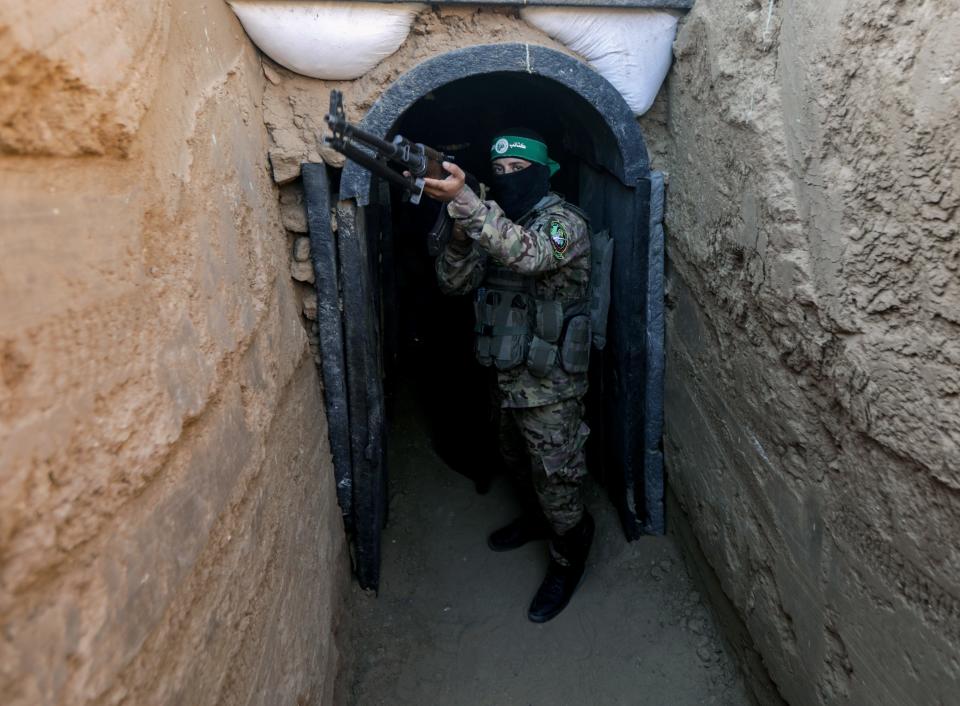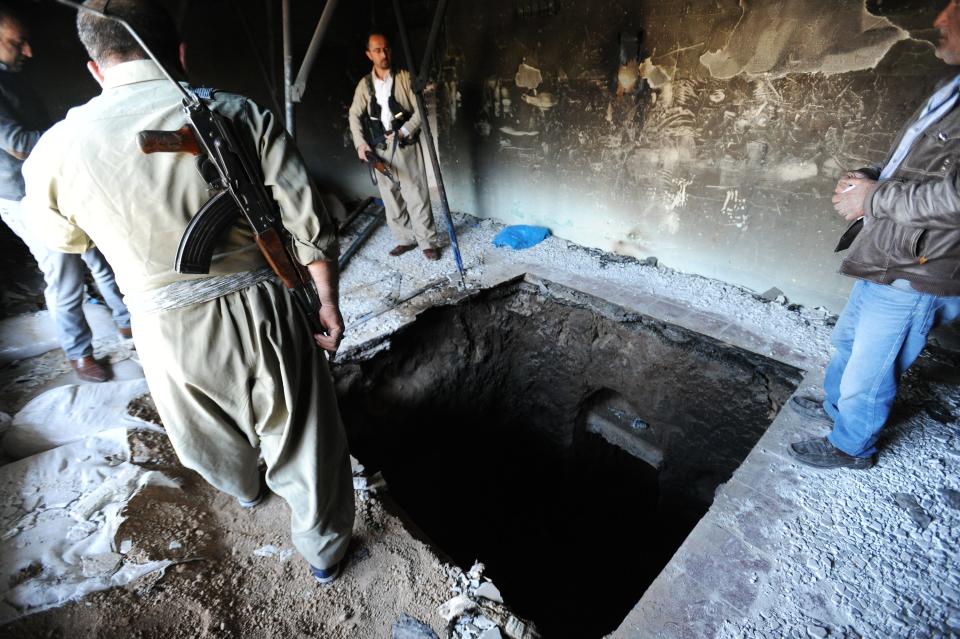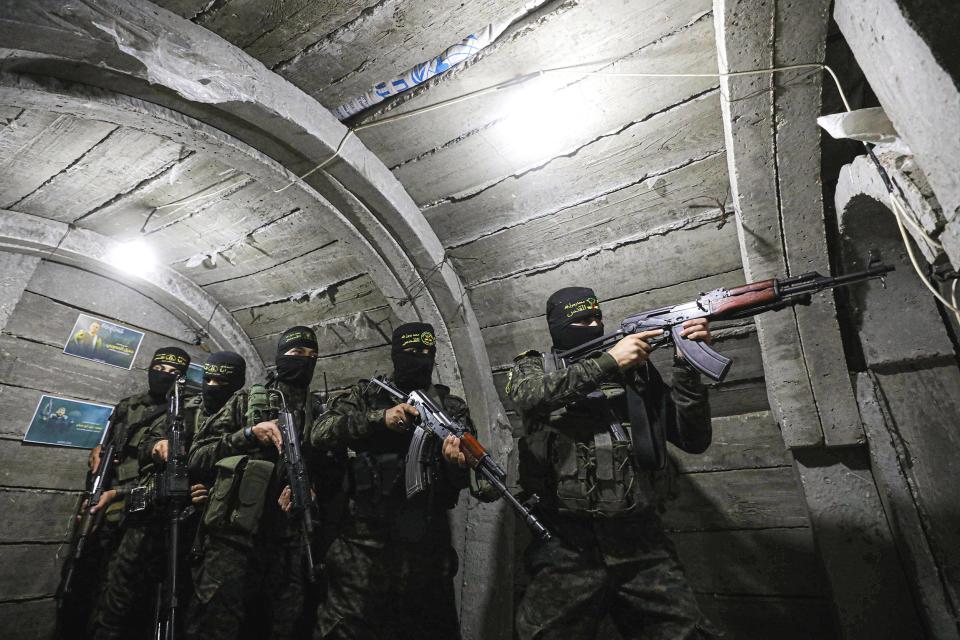Israeli soldiers could end up fighting through an 'underground nightmare' in an invasion of Gaza, home to Hamas' infamous 'metro' of tunnels
Hamas' infamous network of tunnels await Israeli forces should they invade the Gaza Strip.
Israel has referred to the underground labyrinth as the Gaza "metro" due to its size and depth.
A former US Army infantry soldier said Hamas can use tunnels for defensive and offensive maneuvers, challenging an invading force.
Israeli officials have vowed to crush Hamas in response to its brutal terror attacks earlier this month, signaling that the way to ultimately do this is through a major ground invasion of the Gaza Strip. That's easier said than done though.
In Gaza, invading Israeli forces will face a complex and dangerous urban environment, in which Hamas' well-armed and well-prepared forces can hide, set up traps, and launch surprise assaults. And some of the most difficult fighting could be underground, in the city-like labyrinth of tunnels that are vital to the militant group's defensive and offensive operations.
Although it is unclear how the Israel Defense Forces (IDF) will go about dealing with challenges posed by the tunnels, they are a known threat and one for which the IDF is not unprepared. But while the military has the means to infiltrate this network, a former US Army infantry soldier said that in any capacity, "it will increase the time to conduct an operation in Gaza."
"You can't leave a hole to your back," John Spencer, chair of urban warfare studies at West Point's Modern War Institute, told Insider. "And you can't not clear a tunnel if there's a potential for a hostage to be in there."
Hamas claimed in 2021 to have more than 300 miles of tunnels underneath Gaza, a densely populated coastal enclave that's roughly 140 square miles and home to around 2 million people. Israel has previously referred to the subterranean network as the "metro," or "a vast underground city," due to its sheer size and depth.
The IDF says these tunnels are used to hide and store collections of weapons and ammunition, function as command centers and bunkers, and allow for the hidden movement and smuggling of militants and weapons both underneath Gaza and also into Israel. Access points, the military adds, are hidden inside places like schools, hospitals, and other civilian buildings. Israel has also accused Hamas of spending millions of dollars to construct its subterranean network and of diverting construction materials to the tunnels that could otherwise be used to build civilian infrastructure.

Much of the tunnel network is narrow, and some portions have been discovered to be over 200 feet deep. Over the years, Israel has tried to get rid of the tunnels — reinforced by concrete and equipped with electricity — but it's a daunting task. Egypt, which alongside Israel maintains a blockade of Gaza, has even attempted to flood the tunnels to curb their utility.
An 'underground nightmare'
Hamas, of course, isn't the first to use tunnels. During World War II, US Marines faced extensive Japanese tunnels in several battles across the Pacific, including on the island of Iwo Jima, and the American forces were forced to clear them with flamethrowers and hand grenades. Tunnels once again emerged as headaches for the US military a few years later during the Korean War, and then later on in the Vietnam War.
In Vietnam, the Vietcong forces built a huge network of tunnels — used as supply routes, to store ammunition, and to house infrastructure like hospitals — the largest among them being underneath a US base at Cu Chi. Contending with organized guerrilla attacks on the base, the American forces heavily bombed the subterranean labyrinth, but that wasn't enough. The military eventually sent soldiers known as "Tunnel Rats" down there. Lightly armed with a pistol and some other supplies, they faced threats like booby traps, animals, and enemy fighters.
More recently, Western forces dealt with Islamic State and al-Qaeda tunnels in places like Iraq and Afghanistan. In 2017, the US famously dropped one of the largest non-nuclear bombs it has — the GBU-43 Massive Ordnance Air Blast (MOAB), or Mother of all Bombs — on a collection of ISIS-K tunnels and bunkers.

From a defensive perspective, Spencer said, Hamas can use its tunnels to protect all its assets that it doesn't want to lose, such as personnel, leadership, weapons, communication equipment, ammunition, and supplies. The group could also use them to move the 200 hostages it abducted from Israel during the October 7 attacks.
"It takes away Israel's all-seeing eye and strike capability, because it can't hit that far in the ground," Spencer said. Israel has been heavily bombing Gaza, dropping thousands of bombs on targets in the strip, but the tunnels are harder targets that are not as easily destroyed as surface structures.
Offensively, the tunnels give Hamas the ability to conduct surprise attacks on IDF forces, Spencer said. This includes those close in and farther away because the tunnels are connected to rocket launch points, such as pre-set setups that are buried and are only revealed at the last moment when a rocket is autonomously fired. In other cases, rockets are brought to a site and fired off before the militants head back underground.
Hamas can also use the tunnels to just pop up near IDF forces in a style of guerilla warfare that comes as a complete surprise and retreat quickly before the Israelis can effectively return fire.
"Pop up, attack, pop back down in the ground, live to fight another day, move to a different location, and hit them on the other side," Spencer said of how Hamas could use the tunnels for attacks, likening them to gopher or mouse holes.
Many IDF soldiers are trained in advance for basic tunnel warfare, but the military still has several added capabilities to address the challenges in Gaza. One is the Combat Engineering Corps' Yahalom Unit, an elite band of commandos that consists of several different specialized companies handling engineering reconnaissance, non-conventional weapons, explosive ordinance disposal, and tunnel warfare.

The IDF also has other tools at its disposal as well for fighting in the tunnels, such as night-vision systems, drones and robots, ground and aerial sensors, radio technologies, drilling equipment, and more, Spencer wrote in an analysis this week. But the biggest problem facing the IDF is the sheer scale of the tunnel network, and there is no silver bullet to mitigate this issue.
"In this situation, it's not just finding the tunnels that's the issue," Spencer said, adding that Israeli forces can't simply locate the problem, "blow it up," and keeping moving. "You don't know what's down there, because Hamas uses human shields, because Hamas has a hundred-plus hostages — that's going to exponentially challenge this normal underground nightmare."
The tunnel issue, of course, is not the only challenge that Israeli soldiers will face in an invasion of Gaza. The urban environment — which tends to favor whoever is on defense — in the enclave will make for a difficult and nasty fight, characterized by sneak attacks, traps, and other guerrilla tactics. It's something no military seeks to find itself doing, a former senior US intelligence officer told Insider, as the risk to civilians and soldiers alike are grave.
In preparation for what Israeli officials have indicated will be a ground invasion, the country's air force continues to pound Gaza with bombs as it has done every day since the initial Hamas attacks on October 7, which killed at least 1,300 people — mostly civilians — and injured over 4,200 more. The relentless aerial campaign, which has leveled entire neighborhoods, has killed over 3,000 Palestinians and injured another 12,500, according to the latest United Nations figures.
Read the original article on Business Insider

